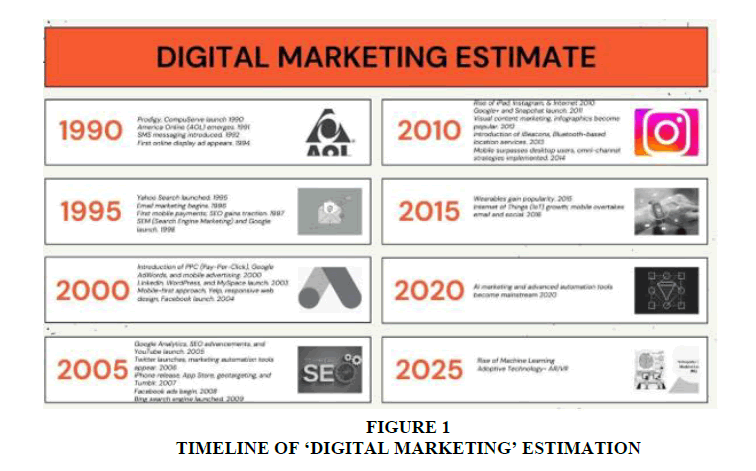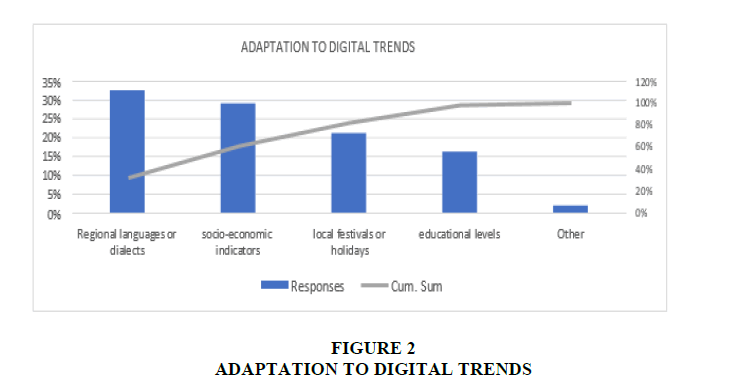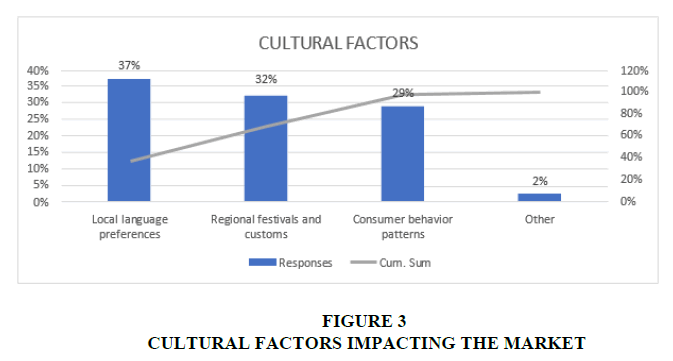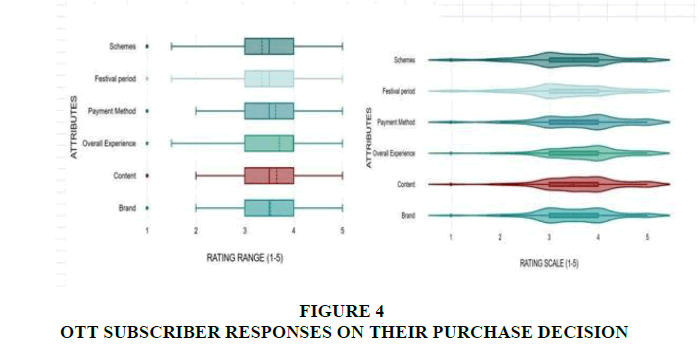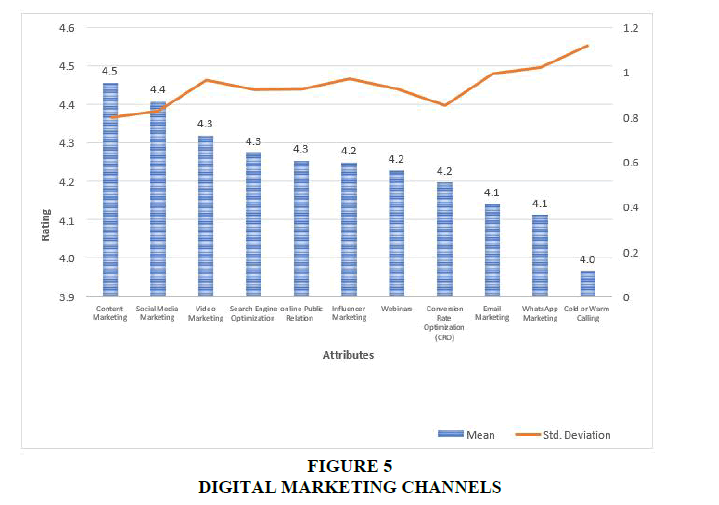Research Article: 2025 Vol: 29 Issue: 5
Digital Marketing Evolution and its Societal Impact on India’s Software and Allied Industries
Prasenjit Chakrabarty, Dr. K.N. Modi University, Newai, Rajasthan
Raj Sinha, Parul University, Vadodara, Gujarat
Citation Information: Chakrabarty, P., & Sinha, R. (2025). Digital marketing evolution and its societal impact on India’s software and allied industries. Academy of Marketing Studies Journal, 29(5), 1-15.
Abstract
The empirical study explores the rapid expansion of digital marketing in India, especially in software and associated line. The rapid evolution of digital marketing, in India, accelerated by the rapid internet adaptation, tele-density and systematic 4G, 5G roll out. Through a dual perspective survey of industry, sales and marketing professionals and OTT (Over the Top) consumers, we gauged the impact of various channels, underlying factors and the impact of regional and cultural composition in this industry. These factors included the local language, local customs and cultural differences and unique local festivities. The data reveals strong customer inclination towards quality of content, flexibility in payment method, stressing the requirement of regional tailored marketing strategies. This study also reveals significant correlations between marketing channels like social media, content and influencer marketing and demographic segmentation, like location, age gender, income group etc. These insights are essential for the marketers to estimate and gauge the success of their campaigns, since go-to-market in India, with western imprint, is always a challenge.
Keywords
Digital Marketing, Digital Media, Marketing, Promotions, Digital Advertising.
Introduction
The digital advertising industry has grown exponentially to ?400Bn by 2023, according to BasuRoy T, May 2024. Digital marketing can be defined as selling or promoting the product or services through digital means, like mobile phones, internet, etc. One aspect of this is promotion-which is done through various channels, like social media, search engine optimization or through influences.
The roots of digital marketing can be traced back to 1981 when International Business Machines (IBM) introduced the first personal computer. Around this time, channel net soft advertising group pioneered digital marketing by incorporating digital tools into advertising campaigns. This marked the beginning of promotional efforts for example, reader reply cards,’ (which were featured in articles) and offered consumers a floppy disk containing multimedia content as part of the advertising campaign. The illustration shows the evolution and history of ‘digital marketing.’ (Schwarzl et al., 2015) (Figure 1).
Materials and Methods
Digital marketing encapsulates a variety of tools and strategies designed to promote products and services using the Internet. Compared to traditional marketing, it offers a broader scope of marketing techniques due to the online platforms and mechanisms. Digital marketing evolves rapidly, requiring a solid foundation in critical thinking, decision-making and innovation. The internet serves as a factor in simplifying and accelerating tasks. In today's world, digital marketing has taken on a dominant role, gradually replacing traditional marketing methods.
Jordan Turner, in March 2024, in Gartner article wrote about 3 impending technological shifts, which they called Gartner hype cycles for digital marketing. These shifts include the accelerated speed of AI adoption, additional obstacles due to Privacy concerns and super apps are making an entrance. We all know the impact the large language models are having. The trend is slowly shifting towards more specialized machine-trained models for executing various selling processes. Customer Data Platforms (CDP), enabled marketers to showcase the product, service across various social channels, are entering into the maturity phase, conversational marketing, like chatbots are replacing humans in call centers, Privacy enhancing computation is becoming popular, which incorporates privacy features, enabling effortless communication, while safeguarding privacy. The latest trend of influencer marketing platforms is growing, Extended Reality (XR)-like Augmented Reality (AR) and Virtual Reality (VR) are becoming increasing real for corporations (Kotler et al., 2017).
Online Marketing in India
According to the latest (August, 2024) PR release of TRAI (Telecom Authority of India), India had approximately 1200 million telephone subscribers, representing about 85.4% tele density (132% Urban and 59% Rural). Out of this, about 903 million were Mobile phone internet users, the digital marketing landscape is experiencing rapid growth, with industry experts noting that this expansion is reaching a critical point. In India, cash on delivery remains the most popular payment method, accounting for 65% of e-retail transactions, according to an article by Chhapia Hemali, Times of India, in Feb 2024. Given the country's dynamic economic growth, the digital marketing sector is expected to see significant career opportunities and expansion.
The impact of online marketing trends on advertising and promotional activities has been profound. Changes in communication tools over the past year have also contributed to this growth. Previously, internet access was limited to the affluent; however, the middle class now has widespread internet access. The advent of the internet and 5G technology has significantly transformed the marketing landscape for both consumers and businesses (Satinder, 2015).
Recent surveys indicate the following about the digital marketing industry in India:
Statista predicts that, as of third quarter 2023, 35.2% of internet users discovered a brand through digital means. Also, 30.5% of internet users surveyed used search engine to discover a brand.
Brand Equity. Com, on their survey on the state of digital marketing in India, between 2023-24, estimates that, an exponential growth in digital ad spending from ?31500 Cr in 2023 to ?41000 Cr in 2024. Of the industries adopting this trend, 60% come from e-commerce and FMCG (IPSOS and Brand Equity, 2023).
In 2024, the Gartner Chief Marketing Officer (CMO) survey pointed out that a substantial chunk of total advertising will be spent on digital channels, though the growth of allocation will reduce than in earlier years. Presently digital means account for 57% of marketing budgets. Through this allocation, the CMO survey reports a scarcity in allocation, with only 24% of CMO’s reports adequate allocation. (Gartner, 2024).
In her article on impact of e-commerce on Indian rural market, Dr. Kanica Sharma, highlights the barriers of e-commerce in rural India, due to barriers in English proficiency among the users and lack of digital skills. She also highlighted those limitations hindered rural population to participate in the economic opportunities in e-marketplace. However, she reported gradual and unidirectional progress (Chaffey et al., 2019).
Objectives of the Study
The purpose of this study includes:
•Obj 1: Analysis the role of digital marketing in the Indian context.
•Obj 2: Identify the various factors-initiatives influencing the growth of this marketing field.
•Obj 3: To examine the perspectives of two key stakeholders, consumers, companies, regarding theexpansion of digital marketing.
Hypotheses of the Study
The hypotheses for this study are:
•H1: The growth of digital marketing is positively correlated with increased internet usage.
•H2: Like traditional marketing, there is a strong relationship between companies and consumers
•H3: The expansion of digital marketing is remarkable and essential in the current era ofglobalization.
| Table 1 REVIEW OF LITERATURE |
||||
|---|---|---|---|---|
| S. no. | Author(s) | Year | Title | Key findings |
| 1 | Sharad Madhukar Dashaputre | 2011 | ‘A study of the growth of internet marketing in the Indian scenario’ | Increased internet and mobile use boosts internet marketing. Internet awareness is crucial and online marketing may eventually overshadow traditional marketing. |
| 2 | Susanne Schwarzl, Monika Grabowska | 2015 | ‘Online marketing strategies: The future Is here’ | Understanding customer behaviour in online and offline channels is essential. Effective marketing and brand definition attract customers. Companies should have an online department to establish a web presence. |
| 3 | Niharika Satinder | 2015 | ‘A study on internet marketing in India: challenges and opportunities’ | Online marketing provides effective customer data gathering, shaping shopping habits due to conveniences like credit card transactions. |
| 4 | Vladislav Yurovsky | - | ‘Pros and cons of internet marketing’ | Internet marketing allows precise targeting, cost-effectiveness and relationship building but faces drawbacks like ad clutter and technological dependence. |
| 5 | D.K. Gangeshwar | 2013 | ‘E-commerce or internet marketing: A business review from the Indian context’ | Projects growth in Indian internet users, benefiting e-commerce opportunities for businesses. |
| 6 | Dr. Amit Singh Rathore, Mr. Mohit Pant, Mr. Chetan Sharma | 2017 | ‘Emerging trends in digital marketing in India’ | Digital marketing techniques like SEO and SEM accelerate shopping; social media boosts consumer engagement. |
| 7 | Kapoor et al. | 2018 | ‘Study on social media's role in marketing in India’ | Over 90% of Indian businesses with an online presence utilize social media and regional content enables targeting of diverse demographics. |
| 8 | Gupta et al. | 2022 | ‘Study on AI-driven marketing strategies in India’ | AI and data analytics improve personalized marketing, enhancing customer segmentation, engagement and conversion rates. |
| 9 | Bansal et al. | 2019 | ‘Study on the Indian E-commerce sector’ | Digital marketing is essential to e- commerce growth (e.g., Flipkart, Amazon). Digital payments and government support (digital India) boost growth. |
| 10 | Sinha and Dey | 2021 | ‘Study on digital divide and challenges in digital marketing’ | The rural-urban digital divide in India limits digital marketing reach; data privacy concerns are rising due to new regulations. |
| 11 | Sen and Singhal | 2020 | ‘Study on influence of marketing on Indian consumers’ | Influencer marketing significantly impacts consumer decisions, especially among millennials and Gen Z, boosting brand trust and engagement. |
| 12 | Agarwal K and Joshi P | 2023 | ‘The role of augmented reality in enhancing digital marketing experiences in India’ |
AR integration in digital marketing creates immersive experiences, especially in retail and e-commerce. |
Research Methodology
The study on digital marketing considers the perspectives: consumers and companies. In order, to concentrate on digital services industry, in India, we had restricted the study to the digital marketing in SaaS industry and OTT platform. We thus ensured that we approached the businesses and consumers of the same segment. Separate questionnaires were developed for each group, focusing on their attitudes towards digital marketing, factors driving this growth and its impact on company turnover (Kotler 1999).
Data Collection
A sample of 301 sales and marketing professionals from various Indian software and associated services industries were surveyed using structured questionnaire. The study targeted sales and marketing professionals of different companies, from software sector, also from other SaaS sectors. Based on turnover, 18% had revenues up to ?5 crores, 51% between ?5 crores and ?50 crores, 31% above ?50 crores. The Cronbach’s alpha of this survey was 0.87 (Evans, 2021).
Another survey was conducted among consumers who purchased an OTT subscription in the last 1 year. We asked them to rate the impact of content richness, brand value, ease of payment, availability of multiple payment options (schemes), specific period based (like festival period), and overall experience.
Since in the consumer survey, the responses were collected for different companies, (like Netflix, Amazon Prime, Zee5, Disney Hotstar, Sony Liv, etc.) the initial Cronbach’s Alpha was 0.95. For each question, subgroup mean and median were calculated. The Cronbach’s Alpha for mean data was 094- which was not considered. For median data, the Cronbach’s Alpha was 0.91-which was considered for further study (Gangeshwar, 2013).
Results and Discussion
The data was collected using a structured survey. The surveys were shared randomly to known/unknown responders. While filling up, qualification criterion kept weeding out not qualifying respondents (Tuten, 2023). Analysis was based on the 5-point Likert scale system (Table 2).
| Table 2 LIKERT SCALE SYSTEM |
|
|---|---|
| Responses | Points |
| Strongly agree | 5 |
| Agree | 4 |
| Neutral | 3 |
| Disagree to some extent | 2 |
| Strongly disagree | 1 |
We asked about the cultural factors affecting services adoption and adaptation of digital trends from the company executives (Figure 2).
•Over 30% of sales and marketing professionals highlight the impact of regional languages,showing the utility of language for reaching the consumer mind. It also highlights the limitation ofEnglish language as a universal medium for communication.
•Around 30% highlighted the socio-cultural indicators, like accessibility, affordability andrelevance. This causal factor shows the necessity for tiered pricing, local discounts and free trialsto reach customers (Rathore et al., 2017).
•Above 20% of respondents pointed to the local festivals as an important contributing factor. While16% pointed towards the education level as an important determinant (Figure 3).
The other question was on the cultural factors affecting the marketing endeavors. Over 35% of the respondents highlighted the local language preference, while over 30% stressed the importance of regional festivals and customs and around 30% spoke of consumer behavior patterns.
From these two insights, the role and contribution of regional language, regional cultural imprint and importance in marketing outreach can be well understood (Alves et al., 2016).
We also surveyed the consumers in the same industry (OTT subscribers). The respondents were paid subscribers in the last 1 year. The survey responses can be seen below (Figure 4).
Data Interpretation
•Content: A key influencing factor content shows a narrow distribution of ratings between 3-4 with a lowerdistribution. There are very few lower tail data, showing that buyers view content as an essential factor forpurchasing decision.
•Payment Method: Shows a consistent mid-range 3-4, indicating that standard payment methods aresatisfactory.
•Influence of festivals and promotional schemes both trends highlight a wider distribution across the scale,highlighting a mixed response, while promotions impact the customer decision, but they are less importantthan content and payment method.
•Brand Influence: The influence of brand exhibits a balanced response.
•Overall Response: The overall response shows a widespread in the violine plot, indicating a mixedresponse and highlights the impact of maintaining a high quality and service is critical (Kapoor et al.,2018).
Together: What does it Mean?
•Local language and cultural customs are essential elements for Go-to Market (GTM) success. Contentquality, festivities leading to promotions and schemes have important implications for customers.
•Socio economic and regional adaptation socio economic and regional factors are key GTM. The importantneed for flexible pricing and adaptation of the product to suit the local needs is important (personalization).The factors like payment methods, Schemes find importance for the customers.
•Customer experience and satisfaction understanding customer behavior patterns and linking to the causalfactors like education level, age, gender etc. is key. In consumer study overall experience shows a widerinterpretation of consumer thought on the buying decisions. And this might have been impacted by theonboarding and post purchase customer experience. The importance of onboarding support and timelycustomer support and feedback can help in retaining the customers.
•Promotions and Timing: 32% respondents highlighted regional festivals as an important cultural factor.The timing of the schemes is key to winning customer mind. In the consumer survey it shows thepromotional period being key to customer buying decision. Marketers can consider aligning marketingcampaigns with local cultural events to the way to customer mind space (Gupta et al., 2022).
Effectiveness of Marketing Channels across Demography
Content marketing, social media marketing, video marketing (especially short form) are the most popular. Search engine optimization, online public relations and Influencer marketing follow closely (Figure 5).
We checked the various marketing channels against age (For kids, age 18 to 30 years, 30 to 50 years, 50 and above), gender (Male, female, will not divulge), location (North India, South India, East India, West India, All over India and export). We also took the responder inputs for various digital marketing channels, in Likert scale, like video marketing, content marketing, webinars, social media marketing, search engine optimization, email marketing, cold or warm calling, Conversion Rate Optimization (CRO), WhatsApp marketing, online public relations and influencer marketing (Bansal et al., 2019).
From the dataset, we looked at the correlation between the demographic profile and the digital channel rating (Table 3). The correlation data is tabulated here.
| Table 3 PEASON’S CORRELATION |
||||
|---|---|---|---|---|
| Channel segment | Location of market | Gender segmentation | Income segmentation | Age segmentation |
| Video marketing | 0.037 | -0.329 | -0.035 | -0.011 |
| Content marketing | -0.002 | -0.223 | -0.09 | -0.112 |
| Webinars | -0.104 | -0.186 | -0.1 | 0.025 |
| Social media marketing | -0.012 | -0.248 | -0.126 | -0.08 |
| Search engine optimization | 0.043 | -0.272 | -0.054 | 0.014 |
| Email marketing | 0.045 | -0.295 | -0.104 | -0.09 |
| Cold or warm calling | -0.015 | -0.227 | -0.256 | -0.054 |
| Conversion Rate Optimization (CRO) | 0.096 | -0.246 | -0.048 | 0.006 |
| WhatsApp marketing | 0.017 | -0.223 | -0.06 | -0.101 |
| online public relation | 0.109 | -0.251 | -0.095 | -0.093 |
| Influencer marketing | 0.044 | -0.318 | -0.059 | 0.03 |
Data Interpretation
Social media marketing and Influencer marketing are negatively correlated with gender segmentation. While designing such strategies, the content and channel need to be A/B tested for optimum gender acceptability (Sinha et al., 2021). Even video marketing, has a strong negative correlation with gender segmentation and so was content marketing, social media marketing, search engine optimization, email marketing and conversion rate optimization (Table 4). We then reconfirmed the assumption using T Test confirmation.
| Table 4 T-TEST FACTORS INFLUENCED BY GENDER SEGMENTATION |
||||
|---|---|---|---|---|
| t | df | p | Mean difference | |
| Gender segmentation | 38.911 | 285 | < 0.001 | 1.899 |
| Social media marketing | 90.084 | 285 | < 0.001 | 4.406 |
| t | df | p | Mean difference | |
| Gender segmentation | 38.911 | 285 | < 0.001 | 1.899 |
| Influencer marketing | 73.899 | 285 | < 0.001 | 4.248 |
| Note: For the student T-test, the alternative hypothesis specifies that the mean is different from 0. | ||||
In both cases, p value is <0.01 thereby signifying the mean-difference.
There is a significant negative correlation of Income segmentation on cold and warm calling. While cold calling, companies must check the income distribution, before enlisting this strategy, especially for high income groups. This is confirmed with a T Test (p <0.01) (Table 5) (Sen et al., 2020).
| Table 5 IMPACT OF INCOME SEGMENTATION |
||||
|---|---|---|---|---|
| t | df | p | Mean Difference | |
| Income segmentation | 29.058 | 300 | <.001 | 2.807 |
| Cold or warm calling | 59.691 | 285 | <.001 | 3.965 |
| Note: For the students t-test, the alternative hypothesis specifies that the mean is different form 0; Students test. | ||||
Age segmentation on content and WhatsApp marketing-there is weak negative correlation between age and WhatsApp and content marketing, which can be validated by a T-Test (Table 6) (Agarwal, 2023).
| Table 6 IMPACT OF AGE DISTRIBUTION |
||||
|---|---|---|---|---|
| t | df | p | Mean difference | |
| Age segmentation | 33.312 | 300 | < 0.001 | 5.9 |
| WhatsApp marketing | 67.957 | 285 | < 0.001 | 4.112 |
| Note: For the students t-test, the alternative hypothesis specifies that the mean is different form 0; Students test. | ||||
A weak positive correlation between the location and online public relations exists (Table 7) (Sharma et al., 2023).
| Table 7 LOCATION SEGMENTATION |
||||
|---|---|---|---|---|
| t | df | p | Mean difference | |
| Location of market | 39.291 | 285 | <0.001 | 2.727 |
| Online publication relation | 77.73 | 285 | <0.001 | 4.252 |
| Note: For the student T-test, the alternative hypothesis specifies that the mean is different from 0. | ||||
While designing social media, influencer campaigns, online public relations, content or WhatsApp marketing or for warm or cold calling, the marketers must evaluate their offering to tune up to ensure thatRegression
An attempt was made to check on what extent the key dependent metric of ‘lead to conversion ratio’ can be explained by the approaches of digital marketing channels (Table 8) (Khan et al., 2022).
| Table 8 MODEL SUMMARY LEAD TO CONVERSION |
||||
|---|---|---|---|---|
| Model | R | R2 | Adjusted R2 | RMSE |
| M0 | 0.000 | 0.000 | 0.000 | 0.849 |
| M1 | 0.053 | 0.306 | 0.212 | 0.754 |
| Note: M1 includes content marketing, video marketing, webinars, influencer marketing, social media marketing, search engine optimization, cold or warm calling, Conversion Rate Optimization (CRO), WhatsApp marketing, online public relation, email marketing, location of market, gender segmentation, age segmentation, income segmentation. | ||||
This shows that 21% of the lead to conversion ration can be explained by these factors. However, ANOVA shows that the contribution is statistically significant (p<0.01) (Brown et al., 2008).
| Table 9 ANOVA |
||||||
|---|---|---|---|---|---|---|
| Model | Sum of squares | df | Mean square | F | P | |
| M1 | Regression | 62.915 | 34 | 1.85 | 3.255 | <0.001 |
| Residual | 142.707 | 251 | 0.569 | |||
| Total | 205.622 | 285 | ||||
Hence the p value shows that the correlation between lead to conversion ratio and digital channels is significant (R2=0.212).
Regression Equation for Lead-to-Conversion Ratio (YYY)
Y=0.023+(0.118 × content marketing)+(0.011 × video marketing)+(0.004 × webinars)−(0.093 × influencer marketing)+(0.169 × social media marketing)−(0.067 × search engine optimization)+(0.176 × cold or warm calling)+(0.029 × conversion rate optimization)−(0.108 × WhatsApp marketing)+(0.071 × online public relations)+(0.120 × email marketing).
Additional Demographic Segmentation Coefficients
For specific demographic segments, add the following terms to the equation: (these are ordinal data)
•Location of Market (e.g., Location 2, 3, etc.) has varied coefficients, such as -0.199-0.199-0.199 forLocation 5 (Menon et al., 2022).
•Gender Segmentation: For example, Gender (2) has a coefficient of 0.1230.1230.123.
•Age Segmentation: Includes coefficients like 0.7820.7820.782 for age segment (2), 1.2641.2641.264 forage segment (6), etc.
•Income segmentation: Includes coefficients like -0.132-0.132-0.132 for Income Segment (2) (Chopra et.al., 2024).
Research Gaps
This is a general study, which highlights the impact of regional and cultural impact in this industry. A more structural and deeper study can be undertaken to explore the causal factors (Rao et al., 2024). Also, the longitudinal impact of digital marketing trends and regional adaptation, can be taken up. The study lacks data and structured surveys in this regard. Another aspect is the technological adaptation in digital marketing strategies (Bose et al., 2023). While we have found that companies are incorporating newer technologies aimed to reduce the cost of GTM and improve efficacy, while addressing the budget constrained highlighted in the 2024 CMO report. The aspect of consumer data privacy and trust is another aspect that needs to be studied in view of the various new legislations in this regard (Das et al., 2022).
Conclusion
In India, the digital marketing is intricately linked with the accessibility of internet and penetration of mobile communication among Indian population and the awareness is only growing. The regional and local cultural elements are pivotal for companies for their go-to-market strategies and for market penetration. Being nimble footed with flexible pricing and being aware of regional expectations are key for the marketers; coupled with supportive onboarding, prompt customer support and festival centric promotions. Content marketing, video marketing and social media marketing are the most popular ones, while we have seen significant negative correlation among gender, location, income and age distribution. For the success of digital marketing, the corporations must incorporate local nuances and customer centric approaches.
Recomadations for further study
The following are the additional study recommendations:
Regional Adaptation Strategies: how the cultural nuances and language and festivities impact. This is critical, since many of the promotions are centralized, due to heavy investment need (Malhotra et al., 2024).
Effectiveness of Festivities Centered Campaigns: The areas of local festivities and regional expectations, which can be filled by the corporations with the programs to meaningfully adopt the cultural attitudes, while communicating and serving the consumers (Chhapia Hemali, 2024).
Impact of Influence on Marketing on Gen Z Customers: The uniqueness of thinking of the newer consumers, needs to be studied further for communication impact assessment and enhancement (Ipsos et al., 2023). This is especially true, since within the next few years, this generation will determine significant purchasing power (Gartner, 2024).
Cross Cultural Composition within India: we can investigate how the digital marketing can align with the cross-cultural evolution and we see as an enhancer rather than inhibitor or challenger, to reduce negative public relation (Sharma, 2024; Basu, 2024).
Acknowledgement
We would like to acknowledge our thanks to all survey participants, our family and coworkers for helping in every step of the research and analysis.
References
- Schwarzl, S., & Grabowska, M. (2015). Online marketing strategies: The future is here. Journal of International Business, 11(2), 13-27.
Kotler, P., Kartajaya, H., & Setiawan, I. (2017). Do traditional ao digital. Rio de janeiro: Sextante.
Satinder, N. (2015). A study on internet marketing in India: Challenges and opportunities. International Journal of Management Studies, 7(1), 34-42.
Chaffey, D., & Ellis-Chadwick, F. (2019). Digital marketing. Pearson UK.
Kotler, P. (1999). Kotler on marketing: How to create, win and dominate markets. Simon and Schuster. Yurovsky, pros and cons of internet marketing, Marketing Insights, 22, 145- 159. Evans, D., Bratton, S., & McKee, J. (2021). Social media marketing. AG Printing and Publishing.Gangeshwar, D. K. (2013). E-commerce or internet marketing: A business review from the Indian context. Asian Journal of Management Research, 3(2), 345-357.
Tuten, T. L. (2023). Social media marketing. Sage Publications Limited.
Rathore, A. S., Pant, M., & Sharma, C. (2017). Emerging trends in digital marketing in India. Indian Journal of Marketing Research, 12(4), 75-82.
Alves, H., Fernandes, C., & Raposo, M. (2016). Social media marketing: A literature review and implications. Psychology & Marketing, 33(12), 1029-1038.
Kapoor, P., Mehta, R., Kumar, V., & Bhatia, S. (2018). Social media’s role in marketing in India. Social Media Studies, 14(3), 91-108.
Gupta, R., Verma, A., & Singh, T. (2022). AI-driven marketing strategies in India: A study of data analytics and personalization. Journal of Digital Marketing Trends, 5(1), 55-63.
Bansal, M., Patel, N., & Sinha, A. (2019). Indian e-commerce sector’s influence on digital marketing evolution. Journal of E-Commerce and Digital Marketing, 2(2), 102-120.
Sinha, A., & Dey, M. (2021). Digital divide and its challenges in India’s digital marketing. Indian Journal of Marketing Research, 15(2), 88-96.
Sen, R., & Singhal, L. (2020). Influencer marketing’s impact on Indian consumers. Marketing and Consumer Behavior Journal, 7(1), 29-37.
Agarwal, K., & Joshi, P. (2023). The role of augmented reality in enhancing digital marketing experiences in India. Journal of Interactive Marketing, 19(3), 112-125.
Sharma, D., & Patel, R. (2023). Evolution of digital payment systems and their impact on consumer trust in India. Journal of Financial Services and Marketing, 27(2), 145-161.
Verma, S., & Goyal, A. (2024). Leveraging AI for hyper-personalized customer engagement in Indian e-commerce. Journal of Digital Marketing and AI, 6(1), 32-48.
Khan, N., & Sethi, P. (2022). The growing importance of voice search optimization in India’s digital marketing landscape. Asian Journal of Marketing, 14(4), 101-115.
Brown, D., & Hayes, N. (2008). Influencer marketing. Routledge.
Menon, V., & Reddy, S. (2023). The effectiveness of influencer collaborations for brand building among Gen Z in India. Journal of Consumer Research, 38(1), 89-106.
Chopra, L., & Singh, T. (2024). Data privacy concerns in digital marketing: Implications of India’s new data protection regulations. Journal of Marketing and Law, 9(2), 67-79.
Leung, F. F., Gu, F. F., & Palmatier, R. W. (2022). Online influencer marketing. Journal of the Academy of Marketing Science, 50(2), 226-251.
Rao, A., & Mukherjee, R. (2024). Exploring the role of AI in predictive analytics and customer segmentation in Indian retail. International Journal of AI and Retail, 3(1), 22-39.
Bose, A., & Saini, M. (2023). Sustainability in digital marketing: Consumer perception and brand responsibility in India. Indian Journal of Marketing, 21(3), 57-70.
Das, P., & Narang, V. (2022). Regional language content and its impact on digital advertising in India. Media and Cultural Studies Journal, 8(2), 98-111.
Malhotra, R., & Iyer, S. (2024). Chatbots and customer service: Enhancing customer engagement in Indian e-commerce. Journal of Technology and Marketing, 17(1), 42-56.
Chhapia Hemali (2024), Cash on Delivery Remains a Preferred Mode of Payment Among Consumers, Times of India.
Ipsos, & ET Brand Equity. (2023). The state of digital marketing: ET Brand Equity and Ipsos special report. Economic Times Brand Equity.
Gartner. (2024). 2024 CMO spend survey: Marketing budgets and priorities. Gartner Research.
Sharma, K. (2023). Role of e-commerce in rural economic development. International Journal of Innovations & Research Analysis, 3(4), 132-135.
Basu Roy, T. (2024). Digital population in India as of January 2023, by type. Statista.
